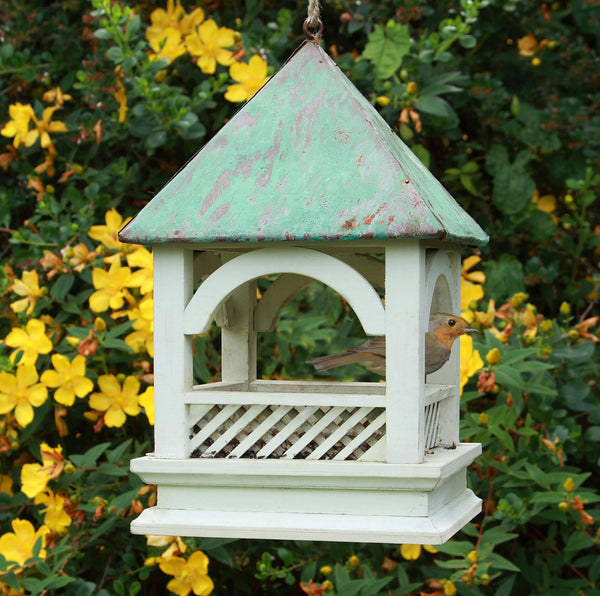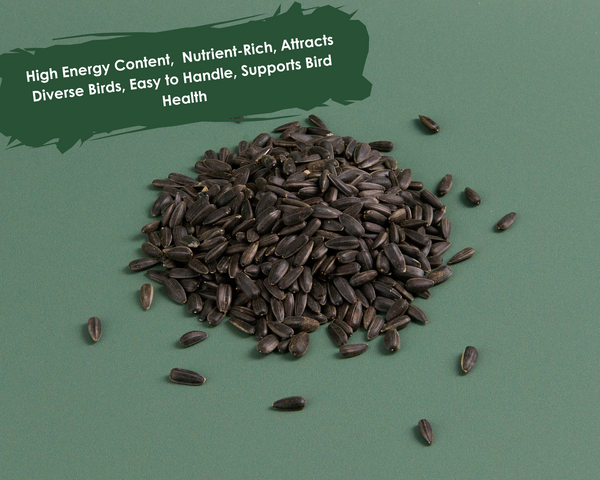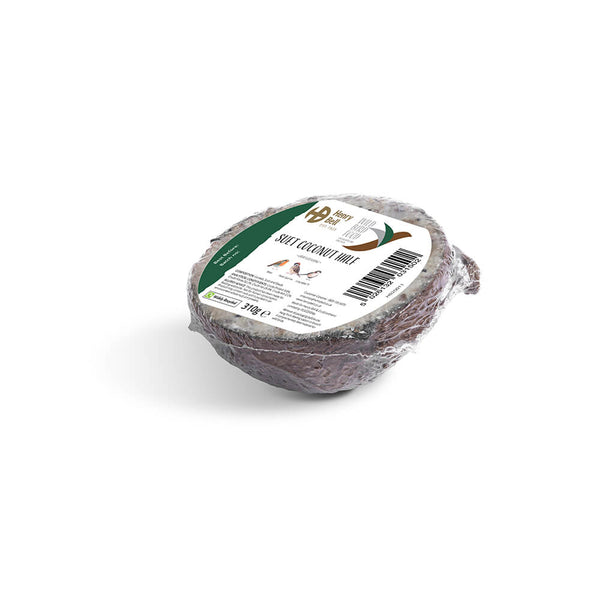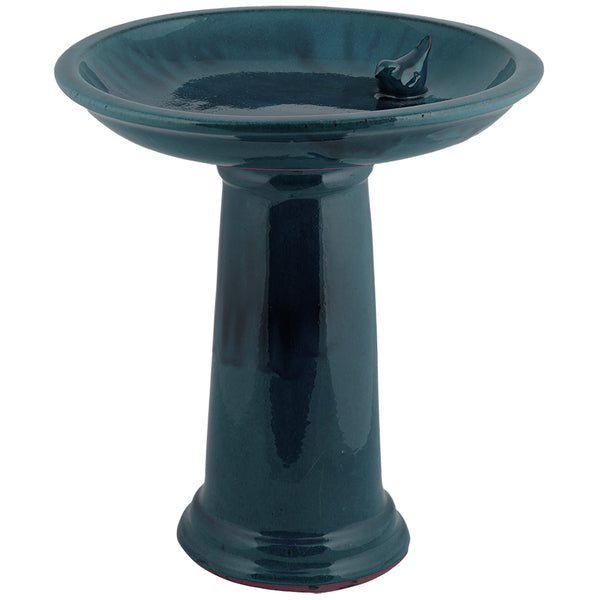UK Birds Beginning With E
In the UK, we have such a wide array of birds, and each one of them is truly amazing - each with their different features and behaviours that make wildlife so interesting for bird watchers across the country.
For most birds, one of the only things they have in common is the first letter their bird names and our A-Z guide of birds makes it easy for you to find out the birds we have in the UK.
In this blog, we are focusing on birds that start with E - and it promises to be a good one with Egyptian Geese and the Fire crest making the list.
UK Birds
Egyptian Goose

Did you know that the Egyptian Goose is not actually a member of the Goose family? It's actually part of the Shelduck family.
Originally native to Africa, the Egyptian Goose was brought over to the UK and introduced into ornamental ponds, however, they escaped into the wild and now have a successful breeding season in the UK.
To spot these birds out at your local reservoir or pond look for the large bird with distinctive dark brown eye patches and white wing patches. There rest of their body is brown in colour.
These large birds beginning with E can live a really long time, the average lifespan in the wild is 15 years and in captivity it can be much longer.
Eider

The Eider is a true sea duck and spends most of its time close to the shore and bobbing around in the sea.
Eider birds breed around the coast of Northern Britain and Ireland and in the winter months, they can be found further south.
In the wild, this birds diet consists of Blue Mussels and other Mollusks and these birds will dive to catch their prey. In the UK, the Eider is the heaviest and fastest duck!
Eurasian Coot

With a distinctive white beak, a while 'bald patch' and and all back body, the Eurasian Coot is an easily recognisable British bird and in the UK, there are 26,000 breeding pairs.
Coots are primarily herbivorous, feeding on aquatic plants, algae, and various seeds. They will also occasionally consume small invertebrates and insects.
They are proficient divers and can forage underwater for food, using their lobed toes for propulsion.During the breeding season, Eurasian Coots are territorial and aggressive towards intruders, often engaging in elaborate displays and vocalisations to defend their nesting sites.
World Wide Birds
Eastern Screech Owl
Common in Eastern North America, Mexico and Canada, the Eastern Screech Owl is a species of bird found in woodland habitats across its range and compared to other Owls, is regularly spotted in urban areas.
Eastern Meadowlark

The Eastern Meadowlark is a medium sized bird that belongs to the blackbird family. This bird can be found in Eastern North America and South America.
The adults have a yellow underpart and white and black streaks. They have a long pointed bill and a striped light brown and black head.
Emperor Goose
Also known as the Beach Goose, the Emperor Goose is a waterfowl species and can be found in remote coastal areas in arctic and sub arctic Alaska.
This Goose is a blue-grey colour and has spots of back and white. It has a white head and back of the neck and it is tinged with yellow. It also has a distinctive black chin and throat.
Egyptian Vulture

The Egyptian Vulture, also known as the white scavenger vulture or pharaoh's chicken, is a small Old World vulture found mainly in parts of Europe, Africa, and Asia. It's easily recognisable by its white plumage, contrasting dark flight feathers, and yellow, bare-skinned face.
Unlike many other vultures, it primarily feeds on carrion but also consumes a variety of other food including insects, small mammals, and eggs. Sadly, it faces threats from habitat loss, poisoning, and collisions with power lines, leading to declining populations in some areas.
Eagle
Eagles are large, powerful birds of prey belonging to the family Accipitridae. They are known for their impressive strength, keen eyesight, and majestic flight.
With strong talons and sharp beaks, they are skilled hunters, preying on a variety of animals ranging from small mammals and birds to fish. Eagles are found on every continent except Antarctica, with various species adapted to diverse habitats such as forests, mountains, grasslands, and coastal areas.
Some of the most well-known species include the Bald Eagle of North America, the Golden Eagle found across the Northern Hemisphere, and the African Fish Eagle of sub-Saharan Africa. These birds hold cultural significance in many societies, symbolising power, freedom, and resilience.
Eared Doves
The Eared Dove, also known as the Paloma Picazuro, is a species of dove native to South America. It is named for the distinctive patch of feathers on the sides of its neck that resemble "ears." These doves are commonly found in open woodlands, savannas, agricultural areas, and urban areas throughout their range.
They have a grayish-brown plumage with a white belly and distinctive black spots on the wings. Eared Doves primarily feed on seeds and grains but may also consume insects. They are known for their gentle cooing calls and are often seen in large flocks, particularly around food sources.
Eared Dove's usually lay two to four eggs around breeding season.
Emperor Penguin
The Emperor Penguin is the largest and heaviest of all penguin species and is renowned for its striking appearance and remarkable adaptations to its harsh Antarctic environment. These majestic birds are easily recognisable by their distinctive black and white plumage, with a bright yellow-orange patch on their chest and ears.
Emperor Penguins are uniquely adapted to survive the extreme cold of Antarctica, with a thick layer of blubber and densely packed feathers providing insulation against the freezing temperatures.
Eagle Owl

The Eagle Owl, also known as the Eurasian Eagle-Owl, is one of the largest and most powerful owls in the world, renowned for its impressive size, striking appearance, and nocturnal hunting prowess. Found across much of Europe and Asia, as well as parts of Africa, this majestic bird of prey inhabits a variety of habitats including forests, rocky cliffs, and open plains.
Eagle Owls are characterised by their large size, with wingspans reaching up to 6 feet (183 cm) and standing over 2 feet (60 cm) tall.
Eared Grebe
The Eared Grebe is a small waterbird belonging to the grebe family, Podicipedidae, known for its striking breeding plumage and unique behaviours. Found across North America, Europe, and Asia, this bird frequents freshwater lakes, ponds, and marshes during the breeding season, where it builds floating nests among emergent vegetation.
During the breeding season, the Eared Grebe displays striking plumage characterised by rich chestnut and black colors, with bright golden "ears" or tufts of feathers extending behind the eyes, giving the bird its name. Outside of the breeding season, it adopts a more subdued gray and white plumage.
Other Birds
European Robin
The European Robin, often simply called the Robin or Robin Redbreast, is a small passerine bird that is widely recognised and beloved across Europe. Despite its name, it's not closely related to the American Robin. Known for its distinctive appearance and melodious song, the European Robin is a common sight in gardens, woodlands, parks, and hedgerows throughout its range.
Robins are characterised by their orange-red breast, face, throat, and sides, which contrast with their brownish-grey upperparts. They have a relatively stout body, short legs, and a prominent, rounded head. Male and female robins look similar, though males typically have slightly brighter plumage.
Eastern Bluebird
The Eastern Bluebird is a small, colourful bird native to eastern North America, renowned for its striking plumage and melodious song. Belonging to the thrush family, Turdidae, the Eastern Bluebird is a symbol of happiness and good fortune in many cultures.
Eastern Bluebirds are easily identified by their bright blue upperparts, rusty-red breast, and white belly. Males typically have brighter and more vibrant plumage than females. They inhabit open woodlands, orchards, farmlands, and suburban areas, where they can find suitable nesting sites such as tree cavities or nest boxes.










